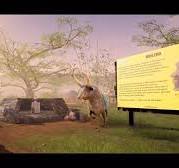
Virtual museums are revolutionizing access to art and cultural heritage. With technology breaking barriers, they offer a global audience the chance to experience, explore, and engage with history in new ways.
The Digital Renaissance: How Virtual Museums Are Changing the Art World
The museum experience, once limited to physical spaces confined by geography and accessibility, is undergoing a radical transformation. Enter the world of virtual museums, a groundbreaking phenomenon that is reshaping the way we engage with art, history, and culture. In the age of technology, art lovers no longer need to travel thousands of miles to view iconic works, nor do they need to wait for special exhibitions. Virtual museums are making these treasures accessible to anyone, anywhere, at any time.
The democratization of art and culture through virtual museums is not merely a technological advancement—it’s a revolution. Museums are no longer just institutions for the privileged few who can afford to travel or pay high entry fees. Instead, digital platforms are creating spaces where anyone with an internet connection can explore the world’s finest art collections, interact with artifacts, and learn about cultural history in an immersive, user-friendly environment.
How Virtual Museums are Making Art Accessible to All
1. Breaking Down Geographical Barriers
Before the advent of virtual museums, visiting the Louvre in Paris, the British Museum in London, or the Metropolitan Museum of Art in New York was reserved for those who had the financial means and time to travel. For the majority of people around the world, this meant that access to these cultural landmarks remained out of reach. However, the rise of virtual museums is changing that reality.
Through digital platforms, these iconic museums have made their collections available to a global audience. Virtual tours allow users to stroll through galleries, zoom in on famous paintings, and examine ancient artifacts—all from the comfort of their homes. This shift is allowing art lovers from every corner of the world to experience culture and history they would have otherwise never encountered.
For example, the Google Arts & Culture platform offers virtual tours of over 2,000 museums worldwide, from the Vatican Museums in Rome to the Uffizi Gallery in Florence. With just a few clicks, individuals can explore exhibitions, access information, and discover the cultural treasures of different countries.
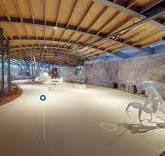
2. Cost-Effective Cultural Exploration
Museum admission fees can be prohibitive, especially for large families or individuals living in areas without easy access to cultural institutions. In contrast, virtual museums often offer free access to their collections, eliminating the financial barrier to engagement. This allows people of all socioeconomic backgrounds to explore art and history at no cost.
Virtual museums also provide opportunities for self-paced learning. Visitors can spend as much time as they like engaging with the artwork, reading detailed descriptions, watching videos, and even attending virtual workshops. This level of access gives a deeper understanding of the pieces being viewed and encourages visitors to interact with art in ways they might not in a traditional museum setting.
The Impact of Virtual Museums on Cultural Heritage
1. Preserving Art and History for Future Generations
One of the most powerful aspects of virtual museums is their role in preserving cultural heritage. Many artworks and artifacts are vulnerable to environmental damage, theft, or natural disasters. By digitizing collections, museums can ensure that these pieces are preserved for future generations, even if the originals are lost or damaged.
The British Museum, for example, has digitized thousands of objects from its vast collection, allowing them to be archived and protected in a virtual space. Not only does this preserve the physical integrity of the artifacts, but it also allows for easier access to them in times of crisis. In a world increasingly affected by climate change, virtual museums are playing an important role in safeguarding our cultural history.
2. Expanding Cultural Narratives and Diverse Voices
Virtual museums are also opening doors for historically marginalized voices to be heard. By offering digital platforms, museums can diversify their exhibits to showcase the art and culture of underrepresented groups. This could include showcasing indigenous cultures, African American history, or art from women artists, ensuring that the stories told through art are not limited to the traditional narratives.
For instance, the Smithsonian Institution’s National Museum of African American History and Culture offers a comprehensive virtual tour that covers pivotal moments in African American history. These types of digital initiatives are contributing to a more inclusive cultural landscape, allowing visitors to explore new perspectives and celebrate the richness of global diversity.
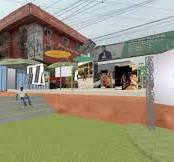
Interactive and Immersive Experiences: The Future
of Virtual Museums
1. Enhanced Interactivity Through Technology
As technology continues to evolve, the potential for virtual museums to offer more interactive and immersive experiences is limitless. Beyond the ability to simply view artwork and artifacts, the future of digital museums lies in creating more engaging and educational experiences. Augmented reality (AR) and virtual reality (VR) are becoming increasingly integrated into museum tours, enabling users to interact with artifacts and exhibitions in more dynamic ways.
Imagine stepping inside a 3D rendering of a famous painting, like Van Gogh’s “Starry Night,” where you can explore the texture of the brushstrokes or manipulate the elements of the painting itself. Or, envision attending a live virtual lecture on ancient Egyptian culture, with artifacts coming to life as holograms. These experiences would elevate the way people engage with culture and history, offering an immersive educational tool that is both fun and informative.
2. The Role of Social Media and User-Generated Content
Virtual museums are also expanding the idea of what it means to be a museum-goer. Social media platforms like Instagram and TikTok are increasingly being used to promote digital art exhibitions and highlight virtual museum tours, encouraging younger generations to engage with cultural content. Social media also gives visitors the opportunity to share their experiences, creating a sense of community and connection that was previously absent from the museum experience.
Moreover, user-generated content is also contributing to the expansion of virtual museums. As more people share their own artwork and digital interpretations, these platforms become not only a space for traditional art, but a hub for creative expression. In this way, virtual museums are becoming dynamic cultural spaces that evolve with the users themselves.
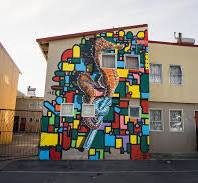
Conclusion: A New Era of Cultural Exploration
The rise of virtual museums marks a significant shift in how we experience art and culture. By removing geographical, financial, and social barriers, these digital platforms are democratizing access to the world’s most treasured collections. Whether you are exploring the walls of the Louvre or learning about the history of ancient civilizations, virtual museums offer an unprecedented level of accessibility and interactivity.
As technology continues to advance, these platforms will only become more immersive, more inclusive, and more engaging. Virtual museums have the potential to revolutionize education, inspire creativity, and preserve cultural heritage for future generations. What was once a privilege reserved for the few is now a global opportunity for all. The world of art and culture has never been more accessible, and it’s just the beginning.
Q&A: The Future of Virtual Museums and Access to Art
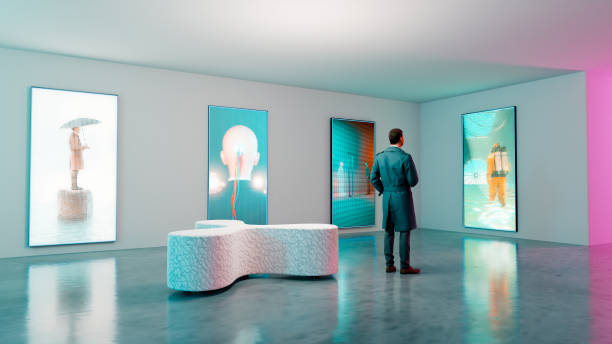
Q: How are virtual museums making art more accessible to people around the world?
A: Virtual museums are breaking down geographical and financial barriers by offering free or low-cost digital tours and exhibitions, allowing people from all over the world to experience and learn about art and culture.Q: What role do virtual museums play in preserving cultural heritage?
A: Virtual museums help preserve artworks and artifacts by digitizing collections, ensuring that cultural heritage is safeguarded against environmental damage, theft, and natural disasters, and remains accessible for future generations.
Q: How are virtual museums expanding the representation of diverse cultures?
A: Virtual museums allow for the inclusion of underrepresented groups and cultures by offering digital exhibits that showcase diverse perspectives, such as indigenous cultures and African American history, creating a more inclusive cultural landscape.
Q: What technological innovations are enhancing the virtual museum experience?
A: Technologies like augmented reality (AR) and virtual reality (VR) are being integrated into virtual museum tours, allowing users to interact with artifacts and exhibitions in new, immersive ways that make the experience more engaging.
Q: How is social media influencing the popularity of virtual museums?
A: Social media platforms are helping to promote virtual museums, engage younger audiences, and allow visitors to share their experiences, creating a sense of community and broadening access to cultural content.
Your point of view caught my eye and was very interesting. Thanks. I have a question for you.
I want sell this site in 1 crore if Enybody interested they can buy I added many ebooks topic, graffic design, article in this website it can you you lots. Of earning in future and I also adede zazzle shopping centre so if Enybody interested you can contact me on this no 8447583214